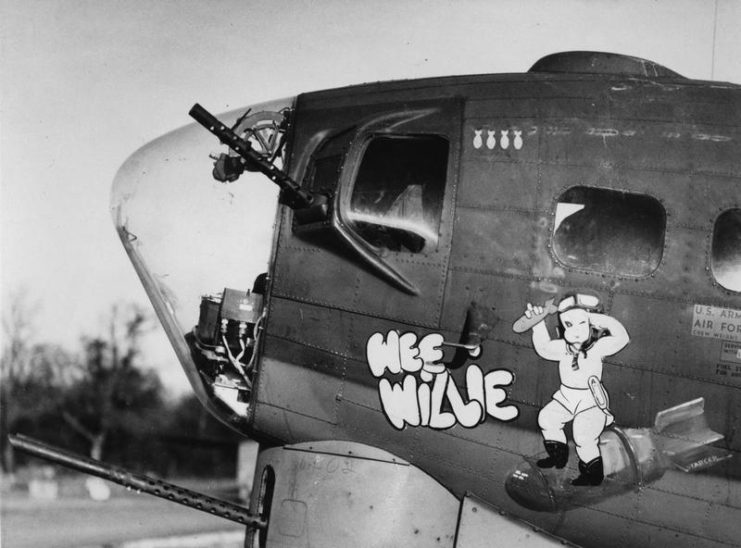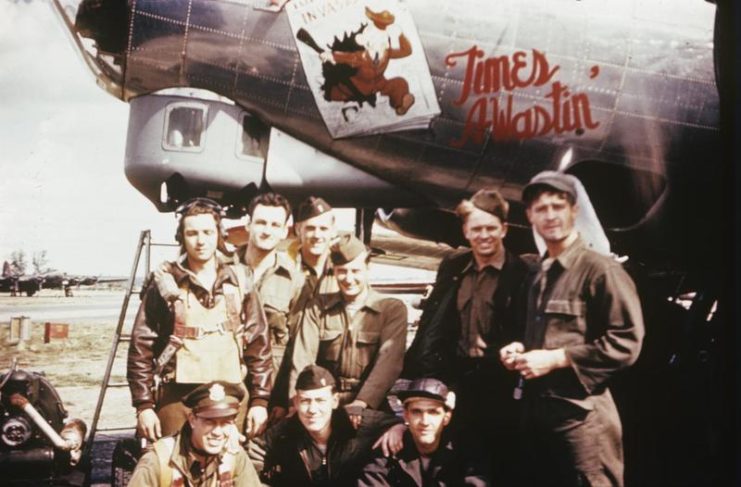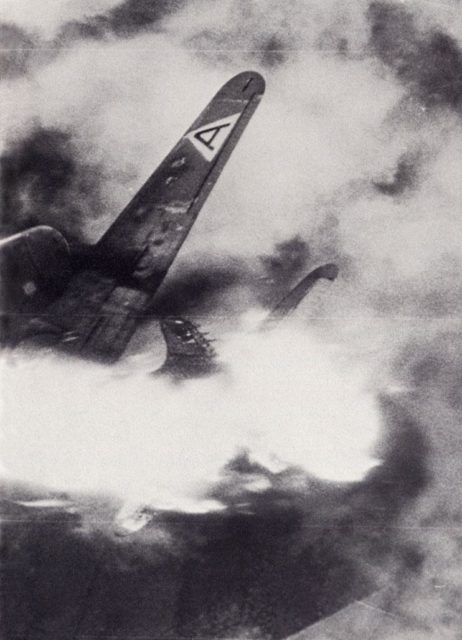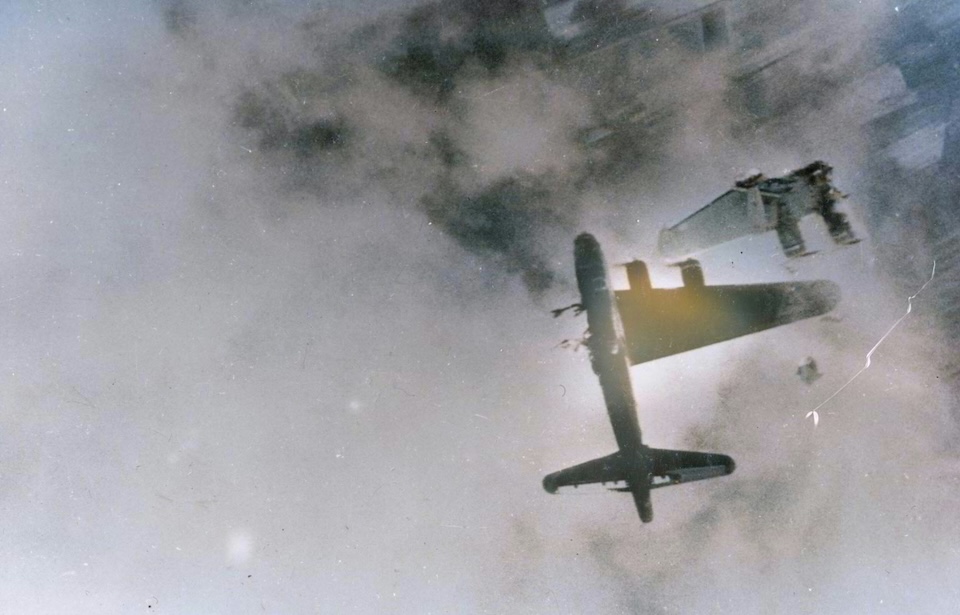As the Second World War drew to a close, the Allies intensified their strategic bombing campaigns against Germany, targeting its industrial infrastructure and seeking to erode civilian morale. On April 8, 1945, during one such mission, the US Army Air Forces’ Boeing B-17G Flying Fortress, famously called Wee Willie, faced catastrophe. Enemy anti-aircraft fire hit the bomber, with the harrowing moment captured in a striking sequence of photographs.
Boeing B-17G Flying Fortress Wee Willie

Wee Willie – B-17G-15-B0, serial number 42-31333 – marked the 302nd B-17G Flying Fortress to roll off the assembly line at Boeing Airplane Company’s Plant 2 in Seattle, Washington. The heavy bomber was delivered to the US Army Air Forces in Cheyenne, Wyoming in October 1943, before being transported to RAF Bassingbourn in Cambridgeshire, United Kingdom.
Upon reaching the UK, Wee Willie was assigned to the 322nd Bombardment Squadron (Heavy), 91st Bombardment Group (Heavy), 1st Air Division, 8th Air Force.
At the time of its loss, the bomber was the longest-serving aircraft within the 91st and was one of the very last to be lost to enemy action before the German surrender.
Preparing to bomb German railroad facilities

Downing of the Boeing B-17G Flying Fortress Wee Willie

During the mission, German anti-aircraft fire caused minor damage to 13 Allied bombers and inflicted severe damage on four others. Of the 73 aircraft involved, only two were completely lost, including the B-17G Wee Willie. Wee Willie was struck directly by an 88 mm flak shell between its #2 engine and bomb bay, sending it into a steep vertical dive.
An eyewitness described the scene: “The fuselage was on fire and when it had dropped approximately 5,000 feet [1,524 meters] the left wing fell off. It continued down and when the fuselage was about 3,000 feet [914.4 meters] from the ground it exploded and then exploded again when it hit the ground.”
Wee Willie carried a crew of nine, with Lt. Fuller being the sole survivor. Reports indicate that he was ejected from the cockpit by the initial explosion, deployed his parachute, and landed safely. However, he was captured by German forces shortly after landing, and his fate following the incident remains unknown.
The entire event was captured on film by an automatic strike camera mounted on another B-17, recording from the release of the first bombs until the film ran out.
Loss of the Boeing B-17G Flying Fortress Times A-Wastin’

Lt. Mike Fodroci, serving as a navigator on another B-17, witnessed the destruction of Times A-Wastin’. According to Fodroci, the aircraft was struck by German flak in its vulnerable bomb bay, likely killing Pastras instantly.
“The ship pulled up and veered to the right, climbing directly over our ship,” he recalled. “Captain Shelby put our ship into a dive so steep that I was thrown up against the astro hatch of the ceiling of the nose – seems I hung there for a brief second or two. I also observed that a bad fire was burning on the aircraft’s forward bomb bay area and that the co-pilot was trying to climb out of the small window with his back pack on. Somehow, we saw three chutes emerge from #504 as she spun toward the earth.”
Of those aboard Times A-Wastin’, only two survived. Radio operator Bob A. Smith and flight engineer/top turret gunner Lyle Jones were captured by the Germans and, like Lt. Fuller, became prisoners of war (POWs).
Despite the loss of two bombers, the mission was deemed a success

More from us: What Is the Real Story Behind WWII’s Famous Crying Child-Soldier Photograph?
New! Want to become a trivia master? Sign up for our War History Fact of the Day newsletter!
